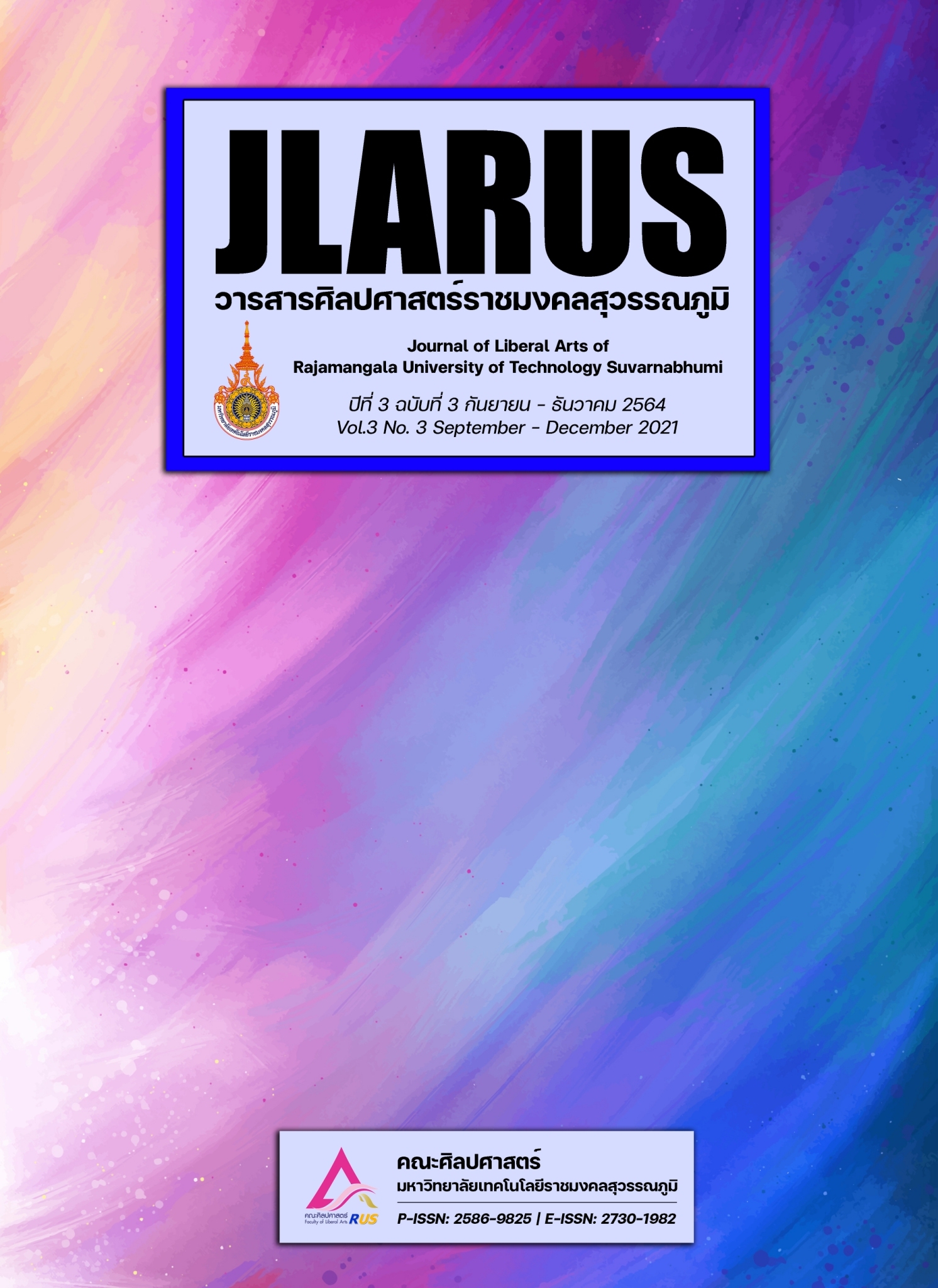THE FACTORS AFFECTING TO ADMINISTRATORS’ STRATEGIC MANAGEMENT PROCESS OF RAJAMANGALA UNIVERSITY OF TECHNOLOGY IN THAILAND
Main Article Content
Abstract
The purposes of this research were to study: 1) the level of strategic management factors of administrators; 2) the level of strategic management process; and 3) the factors affecting to administrators' strategic management process. This research uses a mixed methodology. The research sample were 392 professors and educational personnel of 9 Rajamangala Universities of Technology in Thailand, using proportional comparisons and using a simple random sampling method. The research instrument was a questionnaire and interview guide. Quantitative data analyzed by statistical methods by stepwise multiple regression analysis and qualitative data analyzes by inductive content analysis.
The research results were as follows: 1) The level of administrative factors of the administrators in general and in each aspect was at a high level. In descending order, i.e. innovation and educational technology, leadership of administrators, good governance and participation, building of affective domain and human resource management, respectively. 2) The level of the strategic management process of the management as a whole and in each aspect is at a high level. In descending order, namely strategy formulation, orientation of the organization strategy implementation, strategy control and evaluation, and environmental analysis, respectively. 3) Factors affecting the strategic management process of administrators (Y) are innovation and educational technology (X5), leadership of administrators (X4), good governance and participation (X3), building of affective domain (X2) and human resource management (X1), with be adjusted performance prediction (adjusted R2) was 89.90%, and equation of prediction was tot = 1.458 + 0.422(X5) + 0.354(X4) + 0.218(X3) + 0.185(X2) + 0.138(X1)
Article Details
References
กระทรวงการอุดมศึกษา วิทยาศาสตร์ วิจัยและนวัตกรรม. (2562). พระราชบัญญัติการอุดมศึกษา พ.ศ. 2562. กรุงเทพมหานคร: โรงพิมพ์รับส่งสินค้าและพัสดุภัณฑ์.
พงษ์ศักดิ์ ผกามาศ และดรุณี ปัญจรัตนากร. (2563). รูปแบบการบริหารสู่ความเป็นเลิศของโรงเรียนวิทยาศาสตร์สังกัดสำนักงานคณะกรรมการการศึกษาขั้นพื้นฐาน. การประชุมสถาบันพัฒนาครู คณาจารย์ และบุคลากรทางการศึกษา (สคบศ. วิชาการ) ครั้งที่ 1, จังหวัดนครปฐม. 28-29.
พงษ์ศักดิ์ ผกามาศ, สำเริง อ่อนสัมพันธุ์, สุริยะ วชิรวงศ์ไพศาล, ดรุณี ปัญจรัตนากร, ฤทธิเดช พรหมดี และ เชิดศักดิ์ ศุภโสภณ. (2564). องค์กรแห่งนวัตกรรมทางการศึกษายุคไทยแลนด์ 4.0. การประชุมวิชาการระดับชาติ พะเยาวิจัย ครั้งที่ 10 มหาวิทยาลัยพะเยา. 3513-3528.
Beckers, R., Voordt, D.v.d. and Dewulf, G. (2015). Management Strategies for Aligning Higher Education Accommodation with the User Needs. Journal of Corporate Real Estate, 17(2), 80-97.
Eacott, S. (2008). Strategy in Educational Leadership: in Search of Unity. Journal of Educational Administration, 46(3), 353-375.
Edwards, S. and Ashida, A. (2021). Higher Education in Japan: Internationalization, the Sustainable Development Goals and Survivability. International Journal of Comparative Education and Development, 23(2), 104-119.
Fumasoli, T., Barbato, G. and Turri, M. (2020). The Determinants of University Strategic Positioning: a Reappraisal of the Organisation. Higher Education, 80, 305–334.
Hladchenko, M. (2015). Balanced Scorecard – a Strategic Management System of the Higher Education Institution. International Journal of Educational Management, 29(2), 167-176.
Laudon K.C., and Laudon, J. P. (2019). Management Information Systems. (14th ed). New York: Pearson Education Indochina.
Mahat, M. and Goedegebuure, L. (2016). Strategic Positioning in Higher Education: Reshaping Perspectives", Theory and Method in Higher Education Research (Theory and Method in Higher Education Research, (Vol. 2), Emerald Group Publishing Limited. 223-244.
Mushketova, N., Bydanova, E. and Rouet, G. (2018). National Strategy for Promotion of Russian Universities in the World Market of Education Services. International Journal of Educational Management, 32(1), 46-56.
Sababi Pour Asl, G. and Bafandeh Zendeh, A. (2014). Strategic Plan Compilation Using System Dynamics Modeling: Case Study of a University. Education, Business and Society: Contemporary Middle Eastern Issues, 7(4), 277-292.
Sajwani, Z.S., Hazzam, J., Lahrech, A. and Alnuaimi, M. (2021). A Strategy Tripod Perspective on Merger Effectiveness in the Higher Education Industry: the Mediating Role of Future Foresight. International Journal of Educational Management, 35(5), 925-942.
Sengupta, E., Blessinger, P. and Makhanya, M.S. (2020). Developing and Supporting Multiculturalism and Leadership Development: International Perspectives on Humanizing Higher Education. Innovations in Higher Education Teaching and Learning, 30, 3-13.
Soewarno, N. and Tjahjadi, B. (2020). Mediating Effect of Strategy on Competitive Pressure, Stakeholder Pressure and Strategic Performance Management (SPM): Evidence from HEIs in Indonesia. Benchmarking: An International Journal, 27(6), 1743-1764.
Suherlan, H. (2017). Strategic Alliances in Institutions of Higher Education: a Case Study of Bandung and Bali Institutes of Tourism in Indonesia. International Journal of Tourism Cities, 3(2), 158-183.
Sundgren, M. and Jaldemark, J. (2020). Visualizing Online Collaborative Writing Strategies in Higher Education Group Assignments. International Journal of Information and Learning Technology, 37(5): 351-373.
Wilkins, S. (2020). The Positioning and Competitive Strategies of Higher Education Institutions in the United Arab Emirates. International Journal of Educational Management, 34(1), 139-153.


